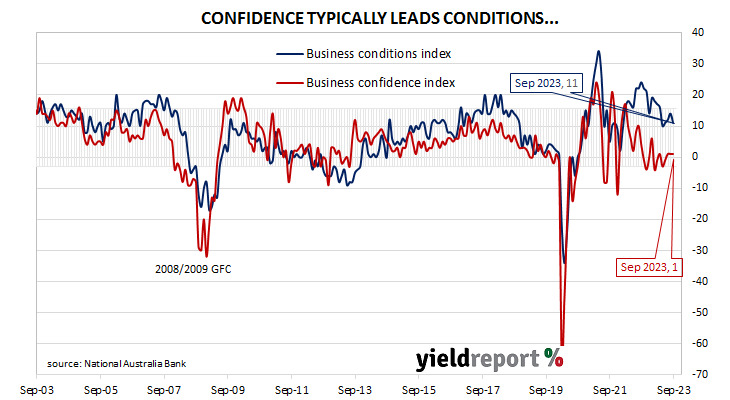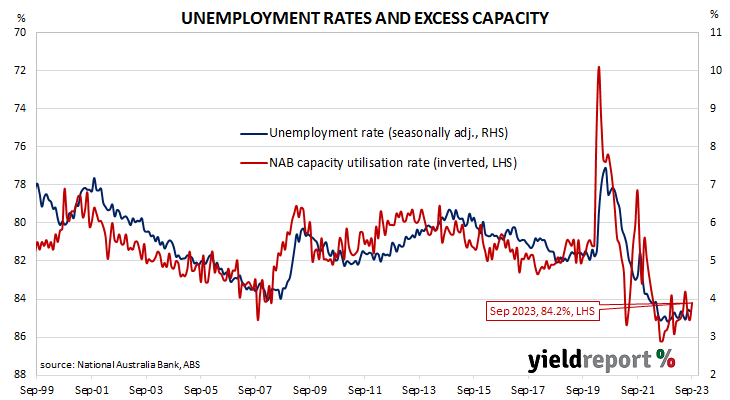Summary: Business conditions deteriorate in September; business pessimism unchanged, still below average; survey points to ongoing resilience, cost pressures and price growth easing; ACGB yields lower; rate-rise expectations soften; capacity utilisation rate declines, still at elevated level.
NAB’s business survey indicated Australian business conditions were robust in the first half of 2018, with a cyclical-peak reached in April of that year. Readings from NAB’s index then began to slip and forecasts of a slowdown in the domestic economy began to emerge in the first half of 2019 as the index trended lower. It hit a nadir in April 2020 as pandemic restrictions were introduced but then conditions improved markedly over the next twelve months.
According to NAB’s latest monthly business survey of around 500 firms conducted in second half of September, business conditions deteriorated somewhat while maintaining a level which is above average. NAB’s conditions index registered 11 points, down 3 points from August’s revised reading.
Business confidence remained unchanged after three consecutive months of improvement. NAB’s confidence index remained unchanged from August’s revised reading of 1 point, still below the long-term average. Typically, NAB’s confidence index leads the conditions index by one month, although some divergences have appeared from time to time.
“Overall, the survey continues to point to ongoing resilience in activity with conditions down slightly in September but remaining above average at +11 index points, where the index has hovered since May,” said NAB senior economist Brody Viney. “The survey also showed some positive signs for inflation with cost pressures and price growth easing.”
The report was released on the same day as the latest Westpac-Melbourne Institute consumer sentiment survey and Commonwealth Government bond yields moved lower on the day. By the close of business, the 3-year ACGB yield had lost 3bps to 3.93%, the 10-year yield had shed 7bps to 4.47% while the 20-year yield finished 5bps lower at 4.82%.
In the cash futures market, expectations regarding further rate rises softened. At the end of the day, contracts implied the cash rate would increase from the current rate of 4.07% and average 4.105% through November, 4.13% in December and 4.175% in February. May 2024 contracts implied a 4.185% average cash rate while August 2024 contracts implied 4.135%, 7bps more than the current rate.
NAB’s measure of national capacity utilisation decreased from August’s reading of 85.1% to 84.2%, a level which is still elevated from a historical perspective. All eight sectors of the economy were reported to be operating at or above their respective long-run averages.
Capacity utilisation is generally accepted as an indicator of future investment expenditure and it also has a strong inverse relationship with Australia’s unemployment rate.



